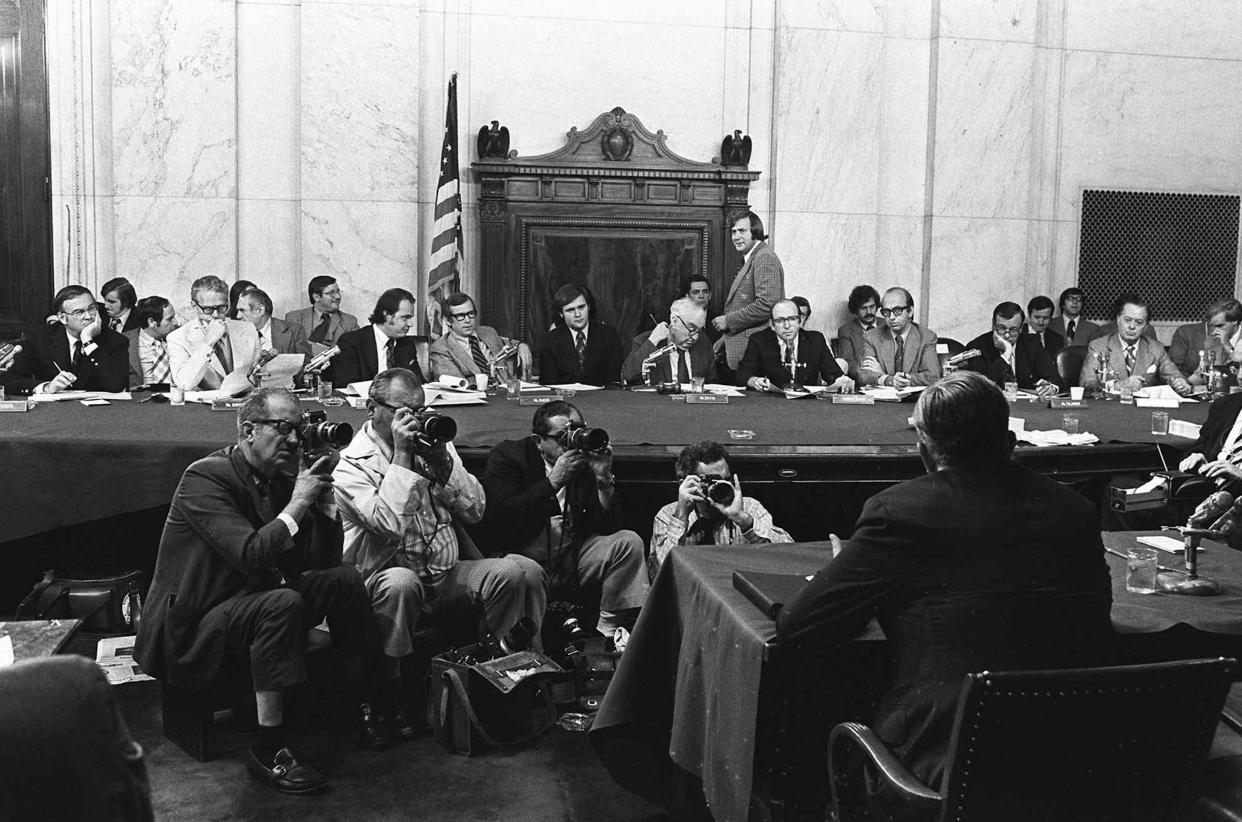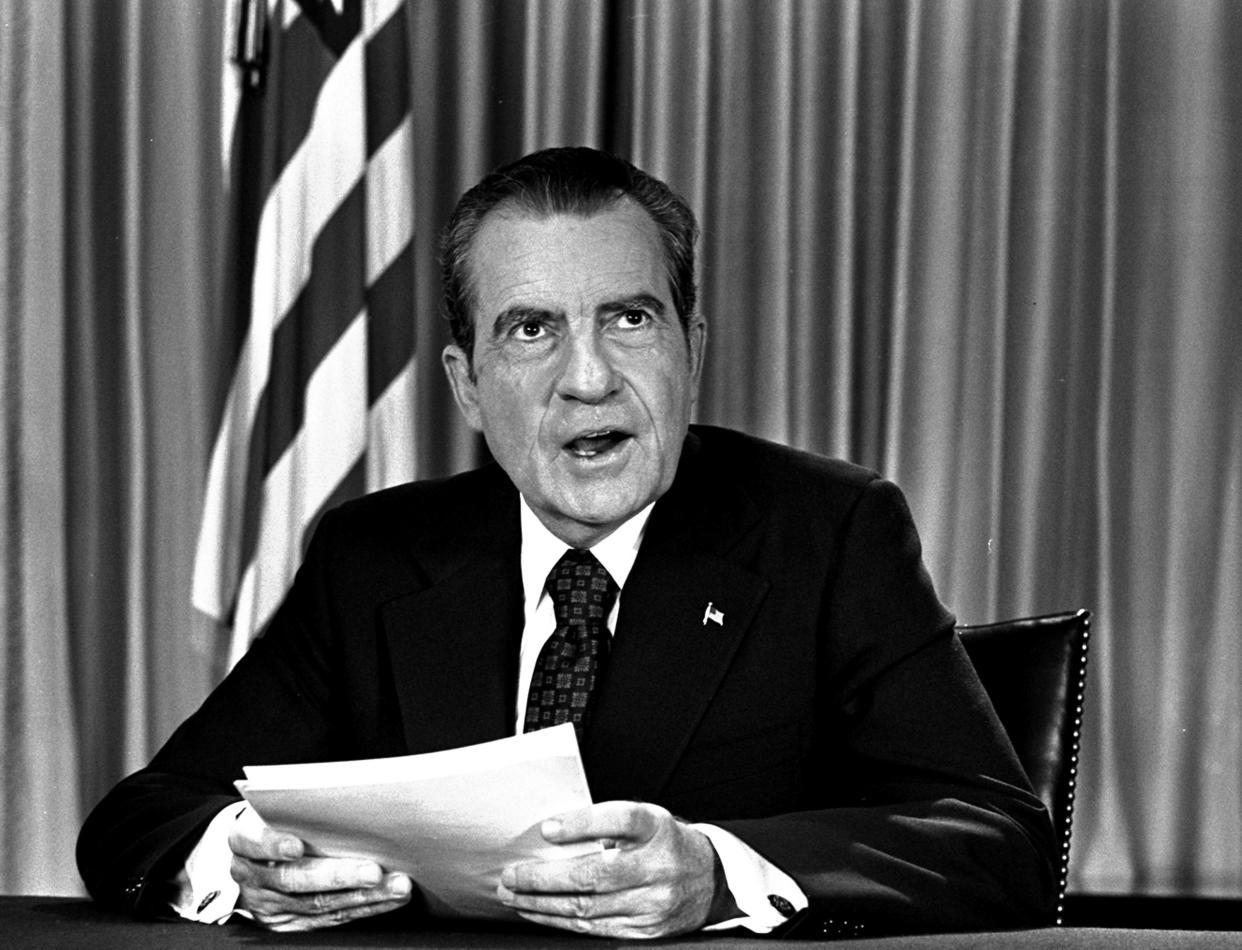Watergate timeline: From the crime to the consequences
WASHINGTON (AP) — A timeline of the Watergate scandal, from the crime to the fall of a president:
June 17, 1972: Five men are arrested in a break-in at the Democratic National Committee headquarters at the Watergate hotel and office complex in Washington.

An exterior view of Watergate office building on Jan. 12, 1973 in Washington, D.C. (BD/)
June 20, 1972: President Richard Nixon and aide H.R. Haldeman discuss Watergate. Later, prosecutors find an 18-minute gap in tape of that conversation.
Sept. 15, 1972: Seven men, including two former White House aides, are indicted in the Watergate break-in.
Jan. 11-30, 1973: Five of the men plead guilty to conspiracy, burglary and wiretapping. Two stand trial and are convicted.

Transcripts of White House tapes and other information is placed into a van outside the Executive Mansion to be carried to the House Judiciary Committee in Washington, April 30, 1974.
April 30, 1973: Haldeman and Nixon aide John D. Ehrlichman resign. White House aide John Dean is fired.
July 16, 1973: Testimony before the Senate Watergate Committee reveals that all of Nixon’s White House conversations were taped.
July 24, 1973: The Supreme Court rules that Nixon must provide the tapes and documents subpoenaed by special Watergate prosecutor Archibald Cox.
Oct. 20, 1973: Cox refuses to compromise on the tapes, and Nixon orders Attorney General Elliot Richardson to fire Cox. Richardson refuses and resigns in protest. Acting Attorney General Robert Bork fires Cox. This becomes known as the Saturday Night Massacre.

In this Aug. 3, 1973, file photo, the Senate Watergate Committee hearings continue on Capitol Hill in Washington, with from left, Sen. Lowell Weicker, Jr; Sen. Edward Gurney, Fred Thompson, Sen. Howard H. Baker; Rufus Edmisten, Sen. Sam Ervin; Sam Dash, and Sen. Joseph Montoya. Testifying is Lt. Gen. Vernon Walters.
July 24, 1974: The Supreme Court rules Nixon must hand over the tapes.
July 27-30, 1974: The House Judiciary Committee approves three articles of impeachment: obstruction of justice, misuse of powers and violation of his oath of office, and failure to comply with House subpoenas.
Aug. 5, 1974: The “smoking gun” tape becomes public. In the recording of a June 23, 1972, conversation, Nixon is heard approving a proposal from his chief of staff to press the FBI to drop its investigation of the Watergate break-in six days earlier. Republicans who had intended to support Nixon in an impeachment trial abandon him.

President Nixon sits in his White House office on Aug. 16, 1973, as he poses for photographer after delivering a nationwide television address dealing with Watergate.
Aug. 9, 1974: Nixon resigns.
Sept. 8, 1974: President Gerald Ford pardons Nixon.
